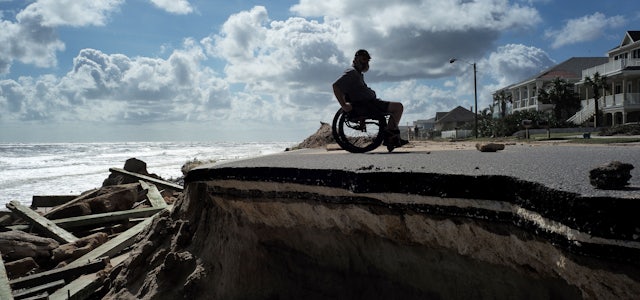
It was only in 2010 that FEMA launched an Office of Disability Integration and Coordination, which made coordinating with stakeholders to better serve disabled people part of its core mandate. Unfortunately, until recently, Parodi said there had been “little engagement from ODIC to the disability community, which creates the failures that we see.” Under new director Sherman Gillums Jr., appointed last August, Parodi said he has seen some improvement. On his first deployment as ODIC director to response operations for Hurricane Fiona in September 2022, Parodi said Gillums was quick to meet with PIDS responders and local Centers for Independent Living representatives. Gillums also often joins PIDS’s weekly national stakeholders call—a basic move but a step up from his predecessors. (Gillums’s office did not respond to multiple requests for an interview for this story.)
Individuals who have interacted with FEMA following recent disasters describe the experience as one of frustration and despair. “I feel like FEMA sets you up to fail,” said Marcella Ruikis, who lost her home in Talent, Oregon, in 2020’s Almeda Drive Fire. Ruikis’s mother, Susan Wells, also lost her home and its built-in assistive equipment, including a ramp and grab bars, that had allowed her to live independently.
The pair stayed in a series of temporary homes ill suited to Wells’s access needs as they sought financial assistance from FEMA, a Kafkaesque process that Ruikis said required months of faxing and mailing paperwork and following up via phone, during which she was often given conflicting information. While FEMA’s Assistance for Other Needs program is meant to provide funds to replace assistive equipment, Ruikis said she and Wells paid more than $700 out of pocket to install a wheelchair ramp when they finally found a longer-term rental.